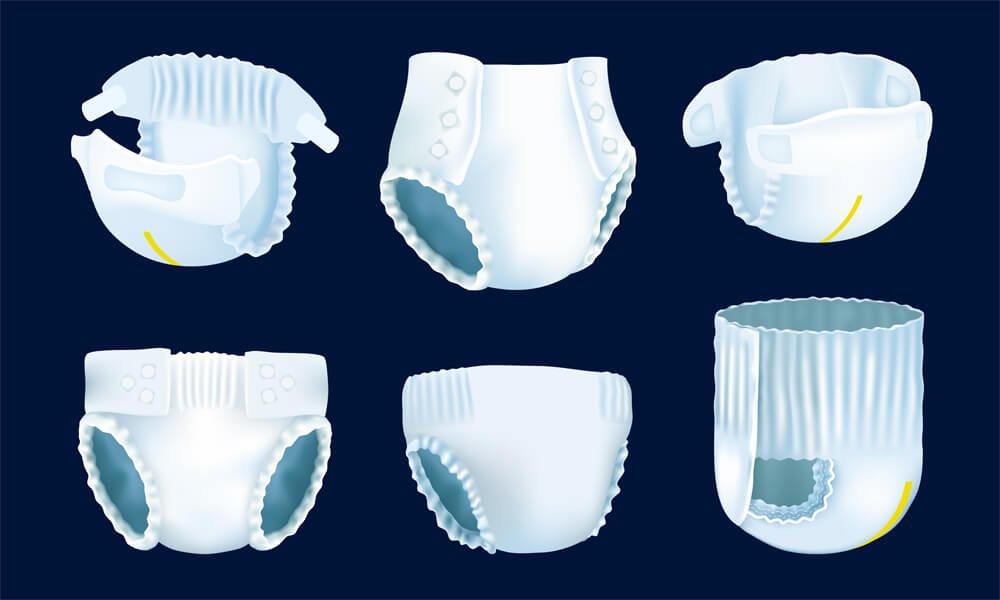The baby and adult diaper industry has witnessed significant transformation over the past few decades. What was once a relatively straightforward market for essential products has now evolved into a dynamic space driven by innovation, sustainability, and changing demographics. As both babies and adults increasingly depend on high-quality, safe, and comfortable diapers, the industry is working to meet new co
The baby and adult diaper industry has witnessed significant transformation over the past few decades. What was once a relatively straightforward market for essential products has now evolved into a dynamic space driven by innovation, sustainability, and changing demographics. As both babies and adults increasingly depend on high-quality, safe, and comfortable diapers, the industry is working to meet new consumer expectations while adhering to environmental regulations and technological advancements. This article will delve into the key trends that are currently affecting the baby and adult diaper industry, providing a comprehensive overview of how these trends are shaping the market.
Sustainability and Eco-friendly Products
Sustainability has become one of the most prominent trends in the diaper industry. With growing environmental concerns, companies are moving toward creating eco-friendly products. Biodegradable diapers, which decompose faster than traditional disposables, are gaining traction in the marketplace.
Parents and caregivers are increasingly conscious of their environmental impact, and the diaper industry is responding by using sustainable materials like bamboo fibers and plant-based plastics. Additionally, eco-friendly diapers are now available in reusable options, further reducing landfill waste. Major brands have launched green diaper lines, and new startups focusing exclusively on sustainability are entering the market. This push towards eco-consciousness is not just limited to baby diapers; adult diaper brands are also adopting greener solutions.
The industry has recognized that, for many consumers, the environmental footprint of their products is as important as comfort and protection. Going forward, we can expect to see more sustainable innovation, as well as a greater emphasis on reducing the carbon footprint throughout the supply chain.
Technological Advancements in Diapers
Technology has found its way into virtually every aspect of life, and the diaper industry is no exception. One of the most exciting developments is the rise of “smart diapers,” which are designed to monitor health metrics such as moisture levels, temperature, and even pH balance.
Smart diapers for babies can alert parents when a diaper needs changing, preventing rashes and discomfort. For adults, particularly those with medical conditions like incontinence, smart diapers can be a game changer. These devices can provide caregivers with real-time data, improving patient care and reducing the risk of infections.
Technology is also enhancing diaper manufacturing processes, leading to thinner, more absorbent materials that still offer superior protection. In the coming years, we can expect further advancements in wearable health technology within the diaper industry.
Changing Consumer Demographics
As populations age around the globe, the demand for adult diapers is on the rise. The adult incontinence product market has grown steadily as medical conditions like diabetes, obesity, and age-related health issues become more prevalent.
Simultaneously, birth rates in some regions are declining, which has shifted market dynamics. The result is a dual-focus for manufacturers: continuing to serve the baby diaper market while expanding product lines tailored to elderly consumers. Many brands now offer specialized products that address the unique needs of adult wearers, such as ultra-discreet and high-absorbency options.
In this evolving landscape, understanding shifting consumer demographics is crucial for companies to remain competitive.
Health and Skin Protection Focus
The diaper industry has always prioritized comfort and protection, but recent years have seen an increased focus on health benefits, especially in response to the growing incidence of skin irritations and diaper rashes.
Manufacturers are developing hypoallergenic products that cater to babies and adults with sensitive skin. Advanced materials that wick moisture away from the skin faster and prevent irritation are becoming standard in high-quality diaper brands. Additionally, diaper creams, lotions, and other skincare products are often bundled or marketed alongside these protective products, offering consumers a complete solution for their skin health needs.
There is also a growing interest in using natural ingredients, such as aloe vera and chamomile, to enhance the protective and soothing properties of diapers.
E-commerce and Direct-to-Consumer Sales
The way consumers purchase diapers is changing, with e-commerce and direct-to-consumer (D2C) sales models gaining popularity. Online shopping has transformed the diaper market, providing convenience for busy parents and caregivers.
Subscription models for diapers, where consumers receive a monthly delivery of products, have become common, especially in the baby diaper segment. These services allow customers to select customized packages based on their needs, often offering discounts and exclusive products.
Brands are now focusing more on digital marketing and e-commerce platforms, bypassing traditional retail channels. This trend has provided smaller or niche brands the opportunity to compete with major players in the market. As internet accessibility continues to grow, especially in emerging markets, e-commerce sales in the diaper industry are likely to increase even further.
Rising Demand for Premium Products
Consumers today are willing to spend more on high-quality diapers, leading to a boom in the premium product segment. Premium diapers typically offer advanced features like superior absorbency, better materials, and enhanced comfort.
For babies, premium diapers may include breathable materials and specialized designs that prevent leaks during nighttime. For adults, premium incontinence products often focus on discretion and odor control, providing more comfort for extended wear.
The trend towards premiumization is driven by consumers who prioritize quality and are willing to invest in products that offer added value. With more disposable income and greater awareness of product benefits, this segment is expected to see continuous growth.
Regulatory and Compliance Changes
The diaper industry is subject to strict regulations to ensure the safety and effectiveness of products. Compliance with international standards such as those set by the FDA or the European Union is critical for manufacturers.
Recent regulatory changes related to environmental impact, product safety, and chemical usage have forced companies to adapt their manufacturing processes. For example, many governments are tightening restrictions on disposable plastic waste, prompting the industry to innovate with biodegradable materials and recyclable packaging.
Manufacturers need to stay ahead of these regulatory changes and comply with the growing body of laws designed to protect consumers and the environment.
Marketing and Brand Loyalty
In an increasingly competitive market, diaper brands are focusing heavily on marketing strategies that foster brand loyalty. With the proliferation of social media, influencer marketing has become a powerful tool, particularly for baby diapers.
Parents are more likely to trust recommendations from popular influencers or parenting blogs, and companies are capitalizing on this trend by collaborating with online personalities. Additionally, loyalty programs that reward repeat purchases are helping brands retain their customer base.
For adult diapers, brands focus on dignity and comfort in their marketing campaigns, emphasizing the positive impact their products can have on quality of life. By highlighting unique features and fostering trust, companies are working hard to build lasting relationships with consumers.
Future Outlook
The diaper industry is expected to continue evolving in the coming years, driven by advancements in technology, sustainability, and consumer preferences. We can anticipate more sophisticated products, from fully biodegradable diapers to smarter wearables that integrate seamlessly with health monitoring systems.
Additionally, with the global aging population, the adult diaper market will likely see sustained growth. The industry’s future will also depend on how well companies can navigate environmental concerns and meet increasingly stringent regulations.
In the long run, the baby and adult diaper industry is set for continued innovation, offering more choices and better solutions for consumers worldwide.
Conclusão
The baby and adult diaper industry is in the midst of significant transformation, influenced by sustainability, technology, and shifting demographics. As manufacturers adapt to meet new consumer demands and regulatory changes, they are creating more advanced, eco-friendly, and health-conscious products. With the market poised for continued innovation, the future of diapers looks promising for both babies and adults alike.

